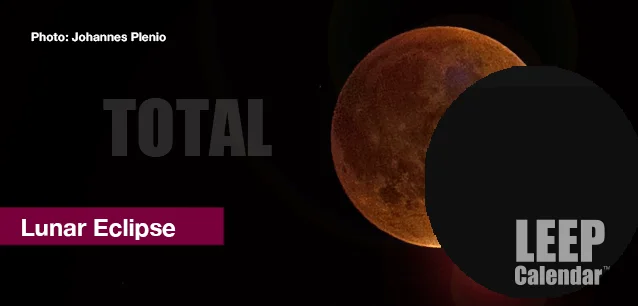 AD
AD
Today is: November 05
Scroll to explore events active on this date.
LEEP INK FEATURES

August is Appropos
A toddler playing in the fountain at a park in Santa Fe, New Mexico—Photo LD Lewis. In August, we live through the Dog Days of Summer. It's hot and often humid, and those ...

September is Sassy
Can you hear that sigh of relief from parents worldwide? Yes! September marks the return of students to school, a global phenomenon. Preparations for the ACT and SATs begin earnestly for ...

OOH LA LA, October
October is the busiest month for events, with 5% more happening than in May, the second most eventful month. Sailing enthusiasts will be glued to the finals of this year's Am...
About the Lunar Eclipse
Other Religions
Ends: Sep 08, 2025
DESCRIPTION:
A lunar eclipse occurs when the Moon passes into the Earth's shadow and appears to go dark. Eclipses can occur one to three times a year and fall into the following categories:
Partial—A partial lunar eclipse occurs when the Moon passes through a portion of the Earth's shadow, the umbra, covering a part of the Moon, giving a reddish-brown hue to the side shadowed by the Earth.
Penumbral—A penumbral lunar eclipse occurs when the Moon passes through the Earth's outer shadow, also known as the penumbra, dimming its intensity and giving it a gray or brownish color.
Total—A total lunar eclipse occurs when the Earth's shadow completely covers the Moon as it passes in front of the Sun. During a total lunar eclipse, the Moon appears reddish-brown. Unlike a solar eclipse, you can watch a lunar eclipse with the naked eye.
VIDEOS
Currently, this event does not have supporting videos.
SUPPORTING DOCUMENTS
Currently, this event does not have supporting documents.
ADDITIONAL IMAGES
Currently, this event does not have supporting images.
Where would you like to go now?
 AD
AD


/footer-logo.svg)
